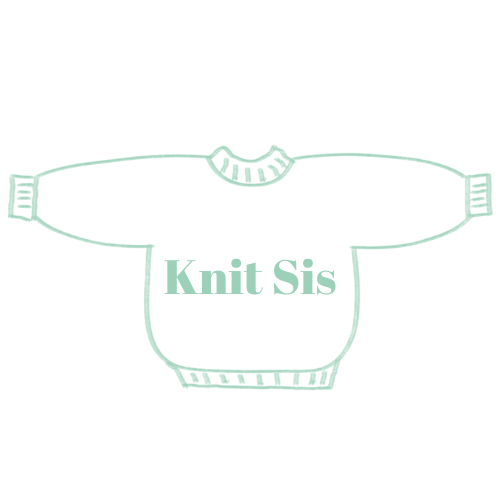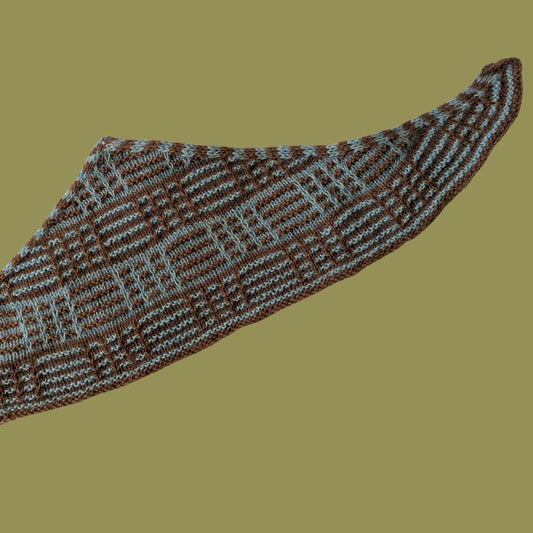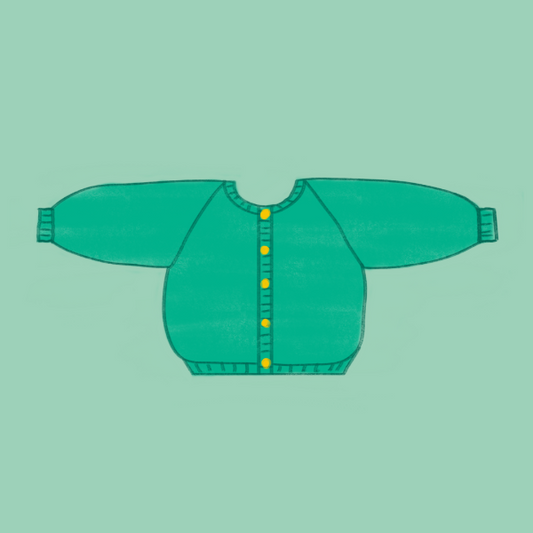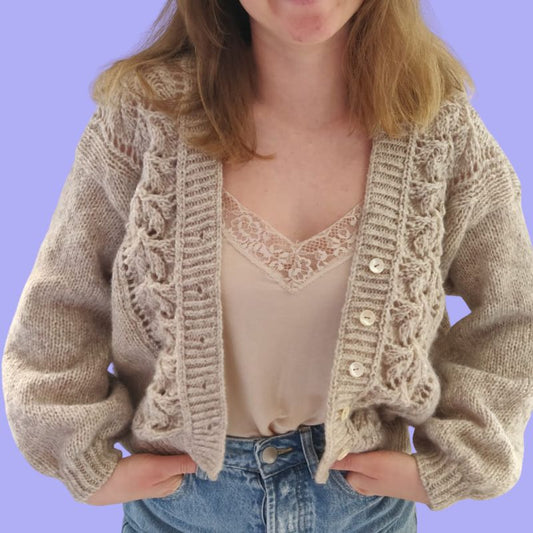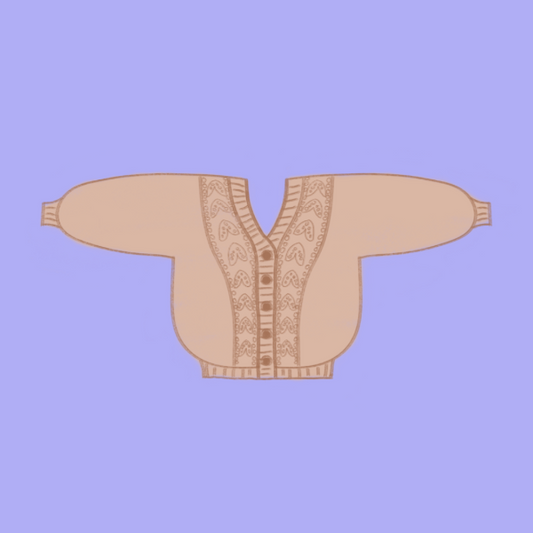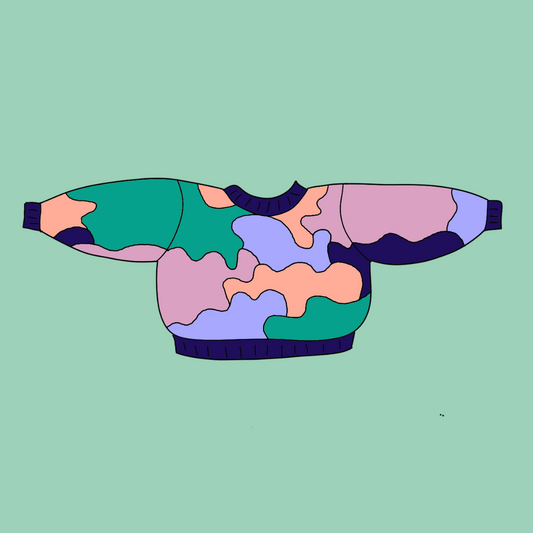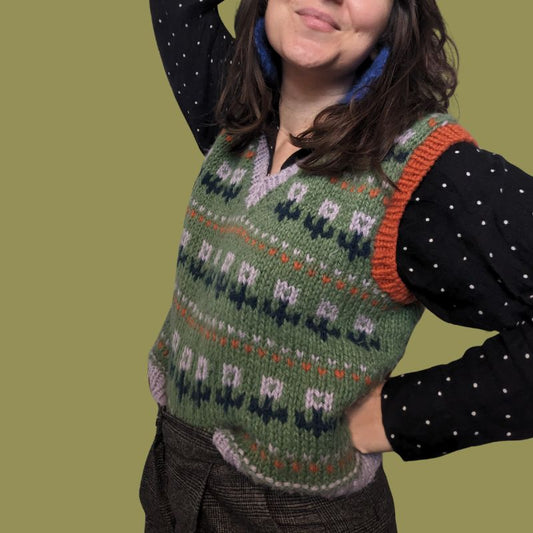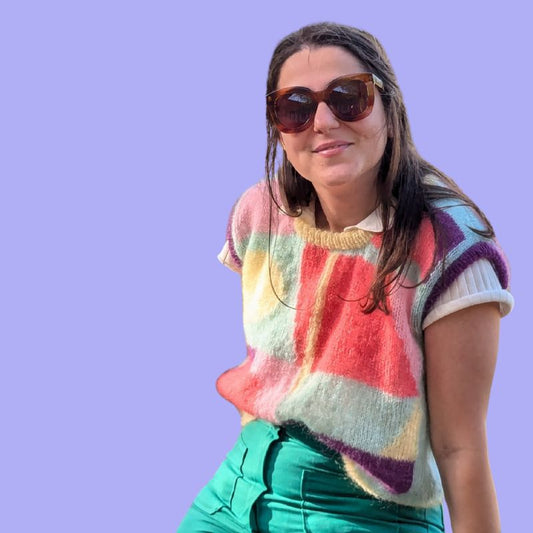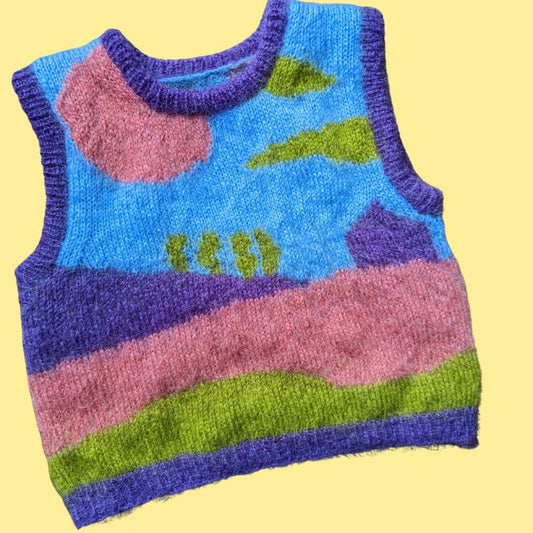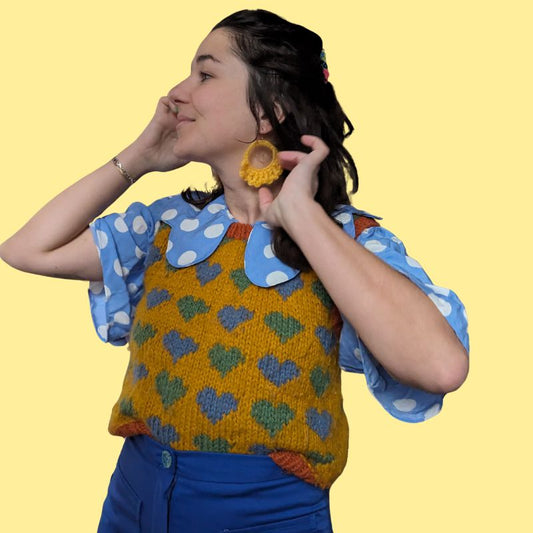🧶 Knitting Fair Isle: the step-by-step technique for a successful colorful pattern
Knit SisShare
Introduction
Do you dream of adding a graphic touch to your knits with a multi-colored pattern without spending three weeks on it?
Fair Isle , also called yarn-tracking jacquard , is an ancient technique that allows you to knit in the round by alternating two colors per row to create rich and regular patterns. At Knit-sis, we learned it with Grandma, and today we're sharing with you a simplified, reliable and neat version of this magical method 💖
What is Fair Isle (Fair Isle)?
Definition & origin
Fair Isle is a traditional technique from the Shetland Islands in Scotland, using two colors per row, with the inactive yarn carried at the back of the work (the “floats”).
What makes Fair Isle unique
▪️ Two colors maximum per row
▪️ Knitted in the round for a continuous pattern
▪️ Patterns are short (no more than 3-5 stitches of the same color to avoid loose threads)
Why knit Fair Isle?
▪️ Graphic appearance : traditional or modern patterns, immediate wow effect
▪️ Guaranteed warmth : the threads worn on the back create a denser and more insulating fabric
▪️ Tactic for leftover wool : perfect for combining several colors with finesse
Step by step to knit Fair Isle 🧵
Equipment & preparation
▪️ Circular or double-pointed needles
▪️ Two wools of the same thickness, contrasting
▪️ Count a maximum of three consecutive stitches of the same color
▪️ Read the pattern chart before you begin
Technical basics
1️⃣ Always knit with two active yarns: one contrasting yarn, one dominant yarn
2️⃣ At each color change, pass the unused thread behind the work, without pulling
3️⃣ To avoid floats that are too long (more than 3-5 stitches): pick up the inactive yarn by passing it over or under the knitted yarn every 3-5 stitches ( stitching technique )
4️⃣ We knit in the round only , so the patterns repeat seamlessly.
Essential finishes
▪️ Light blocking to flatten the pattern and even out the tension
▪️ Cutting steeks , if you are making armholes or openings (traditional Shetland method)
Knit-sis patterns compatible with this technique
Although none of our patterns are yet 100% Fair Isle jacquard, some are perfect for incorporating a colorful pattern:
▪️ Elmer : two-tone basket stitch, easily adaptable to a two-tone or three-tone jacquard pattern.
See the Elmer boss
▪️ Twist & Shout : retro twists + possibility of mixing a two-tone pattern on the sleeves or edges.
See the Twist & Shout pattern
▪️ Festi : modern cardigan knitted in the round, offers an ideal base for a jacquard pattern in yoke or decorative band.
See the Festi pattern
📩 Curious about our next Jacquard pattern by Knit-sis? Subscribe to our newsletter to be the first to know!
Knitting tips and FAQs for a successful Fair Isle
How to choose your colors?
Favor contrasting wools with different color values for a clean pattern.
What voltage should I use?
The floats must be loose , without pulling, otherwise the fabric will curl or shrink.
Which wool should I choose?
Slightly fluffy wool (Shetland or curly merino type) helps hide floats and provides softness and warmth
Conclusion 💡
Fair Isle is an elegant, authentic, and characterful technique, accessible as soon as you've mastered jersey knitting and can follow a colorful chart. With the right yarn selection and a little patience, you can create a unique, warm, and stylish piece.
👉 To discover other accessible and modern patterns like Elmer, Festi or Twist & Shout, visit our [Knit‑sis pattern collection]
💌 And subscribe to our newsletter to receive exclusive guides, knitting tips and previews of jacquard patterns 📬
✅ To remember
▪️ Fair Isle = jacquard worn in the round, 2 colors max per row, controlled floats
▪️ Simple technique provided you manage the tension and leftover thread well
▪️ Models like Elmer, Festi and Twist & Shout are perfect for getting started
▪️ Don't forget to block your work for a professional finish
